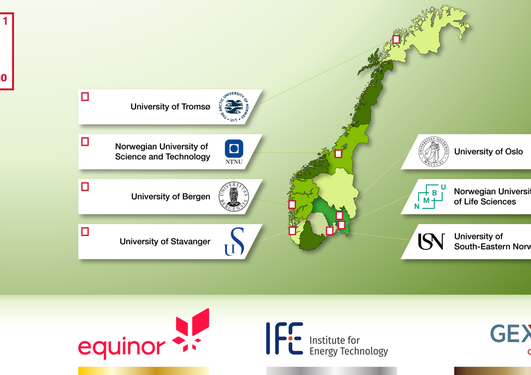HySchool Webinar #5: Torbjørn Egeland-Eriksen (UIO/NORCE) & Wendpanga Jean Donald Minougou (UiS)
The next HySchool Webinar will take place on Teams at 13:00 CET (1 pm) on 18 October 2023. Two admitted PhD students will each be holding a 15-minute presentation + Q&A session on their research topic.

Hovedinnhold
You will find powerpoints from the presentations under "Documents" after the webinar.
Torbjørn Egeland-Eriksen
Industrial PhD student at UiO and NORCE
Simulating hydrogen production from offshore wind power
Green hydrogen, which is hydrogen produced through electrolysis with renewable energy as input power, could become an important part of the energy transition away from fossil fuels. One possible method of producing green hydrogen is to utilize electricity from offshore wind power as input power to electrolyzers. However, green hydrogen still has challenges related to energy losses and costs, as well as intermittency issues when the electricity comes from wind power.
In this study we performed computer simulations of an energy system where the electricity from a floating offshore wind turbine (FOWT) is used to produce hydrogen in a proton exchange membrane (PEM) electrolyzer. The inputs to the computer model are real-world data from a 2.3 MW FOWT from five different 31-day periods and Nord Pool electricity price data from the same five periods. The model then simulates hydrogen production and calculates various important outputs, including the production cost and energy efficiency of the process. A comparison of the five periods showed that the large variations in wind power and electricity prices caused the total hydrogen production and cost to vary by a factor of three between periods.
Wendpanga Jean Donald Minougou
PhD-student at UiS
Geochemical Challenges Associated with Hydrogen Underground Storage.
Hydrogen is expected to play a key role in the future as a clean energy source that can help mitigate global warming. It can also contribute significantly to reducing the imbalance between energy supply and demand posed by deploying renewable energy. Since surface facilities such as pipelines and tanks have limited capacity, large-scale storage options will be needed if we want to integrate hydrogen into the energy scheme in society.
Geological formations, particularly salt caverns, seem to be a practical option for this large-scale storage as there is already good experience storing hydrocarbons in caverns worldwide. Salt is known to be ductile, impermeable, and inert to natural gas. However, major salt structures are always associated with impurities during the time of their deposition. These impurities bring challenges to the storage integrity of hydrogen in salt caverns. One of the major challenges is related to the geochemical interaction between hydrogen and some of the minerals. It is known that salt formations often contain some impurities such as anhydrite, clays, carbonates, and quartz that could react with hydrogen leading to the formation of undesired components such as hydrogen sulfide through microbial catalysis and under certain conditions of pressure and temperature. Hydrogen sulfide poses a risk to the safety of the storage operation.
We are using a geochemical model to assess the potential of hydrogen sulfide release in salt caverns in the context of hydrogen storage. From then on, we investigate the influence of thermodynamic parameters such as temperature, pressure, kinetic rate, and pH on H2S production in a high salinity environment. The goal of the research is to develop a database that could serve as a tool for site selection for geological hydrogen storage.
Microsoft Teams meeting
Join on your computer, mobile app or room device
Click here to join the meeting
Meeting ID: 340 510 041 620
Passcode: mHUjdL


